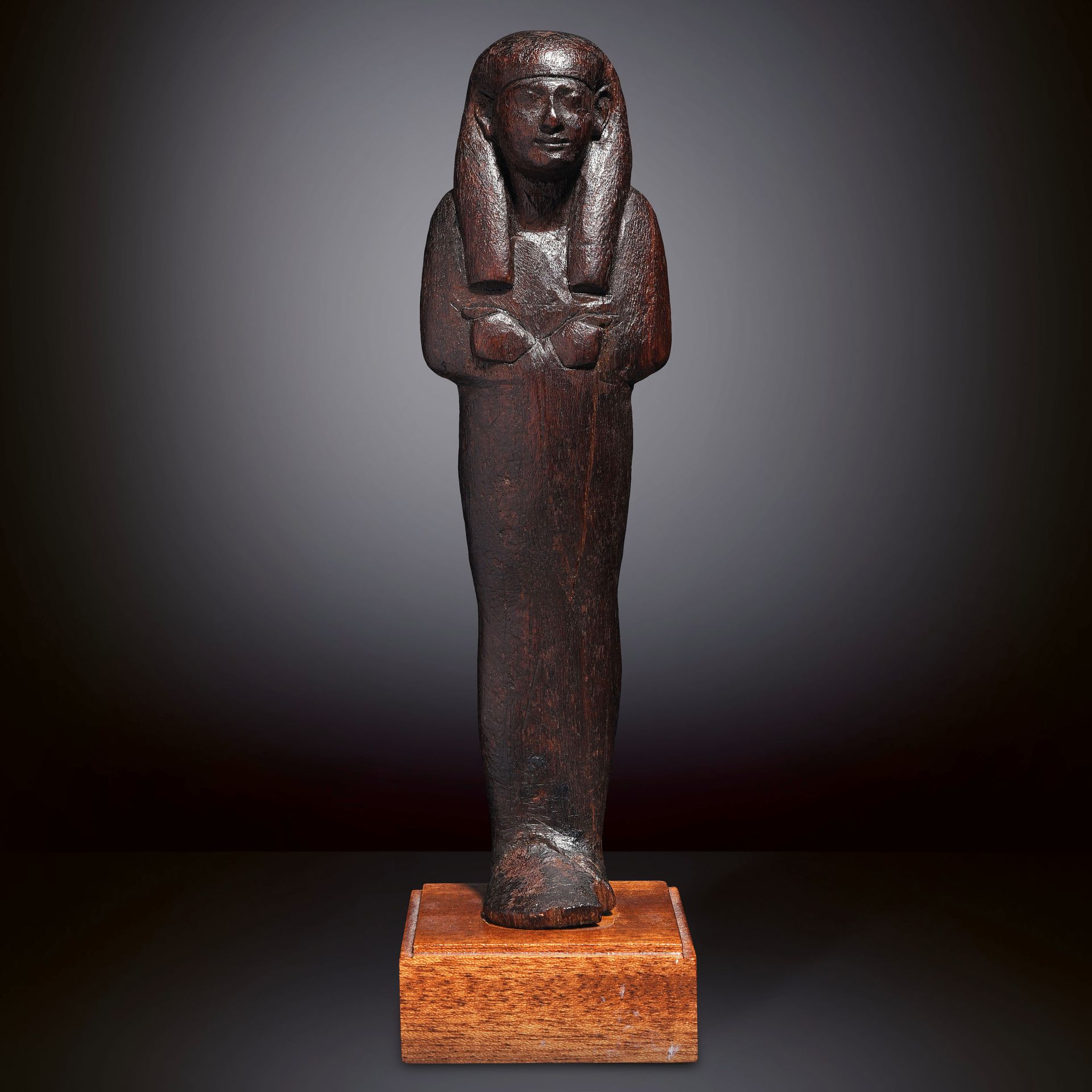Description
USHABTI Egypt, New Kingdom, late 18th - 19th dynasty, c. 1300 B.C. Wood. Slight cracks and restoration to the feet. H. 18,5 cm Provenance Formerly German collection, Galerie Puhze, Freiburg, Germany Collection R. Liechti (1934-2010), Geneva, Switzerland, acquired in 1987 Private collection The statuette, of remarkable artistic quality, has slender and elegant proportions (the somewhat thin profile emphasizes the importance of the front view), as well as good plasticity (sinuous and well-molded forms), but no inscription allows the identification of its owner. His body is entirely draped in the mummy-like sheath. He wears a long tripartite wig. Beautifully preserved. A New-Kingdom wooden shabti. The statuette, of remarkable artistic quality, has slender and elegant proportions (the slightly thin profile emphasizes the importance of the front view), as well as good plasticity (sinuous and well-molded shapes), but no inscription allows identify the owner. His body is fully draped in the mummiform sheath and he wears a long tripartite wig. Beautiful conservation. Ca. Dynasty XVIII-XIX, c. 1300 B.C
26
USHABTI Egypt, New Kingdom, late 18th - 19th dynasty, c. 1300 B.C. Wood. Slight cracks and restoration to the feet. H. 18,5 cm Provenance Formerly German collection, Galerie Puhze, Freiburg, Germany Collection R. Liechti (1934-2010), Geneva, Switzerland, acquired in 1987 Private collection The statuette, of remarkable artistic quality, has slender and elegant proportions (the somewhat thin profile emphasizes the importance of the front view), as well as good plasticity (sinuous and well-molded forms), but no inscription allows the identification of its owner. His body is entirely draped in the mummy-like sheath. He wears a long tripartite wig. Beautifully preserved. A New-Kingdom wooden shabti. The statuette, of remarkable artistic quality, has slender and elegant proportions (the slightly thin profile emphasizes the importance of the front view), as well as good plasticity (sinuous and well-molded shapes), but no inscription allows identify the owner. His body is fully draped in the mummiform sheath and he wears a long tripartite wig. Beautiful conservation. Ca. Dynasty XVIII-XIX, c. 1300 B.C
You may also like
